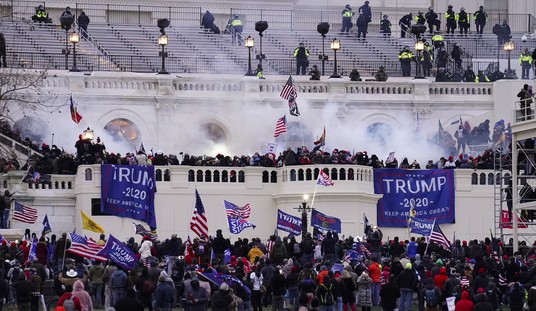We pundits have been busy crunching the results in last Tuesday's Wisconsin recall election and have noted that the public-employee unions sustained a huge defeat.
Some have also looked west, to California, where San Diego and San Jose voters Tuesday voted 66 and 69 percent to cut back public-employee pensions. Those cities voted 63 and 69 percent for Barack Obama in 2008.
But there's something else worth noting in the California returns. State voters adopted a new primary procedure, in which the top two vote-getters, regardless of party, go on to the general election.
Washington state had a similar primary system in the 1990s, and the primary results tended to be replicated in November. For example, the 1994 primary results enabled some to forecast that Democrats would lose six of nine House seats in November.
So it may be revealing to compare the total primary vote for the House in California with the total House vote in previous elections. Statewide, 53 percent of the votes were cast for Democrats and 43 percent for Republicans. That may understate Republicans' strength, since they left eight seats uncontested and Democrats only one.
Those totals are almost exactly the same as in the November 2010 election, when Democrats won 53 percent of the House vote and Republicans 42 percent. They are quite different from 2008, when California Democrats won 60 percent of the House votes and Republicans 37 percent.
So it looks like voters in California, as in Wisconsin, where Republican Scott Walker improved slightly on his 2010 percentage, are closer to where they were in 2010 than where they were in 2008.
Some may reply that Democratic turnout was low last week and Democrats may be a larger share of the electorate in November. That's possible.
Recommended
But neither Mitt Romney nor Barack Obama -- who was outraised by the Romney side in May -- are going to put money or organization in California this fall. Neither is Democratic Sen. Dianne Feinstein, who won 236,000 more votes than the unopposed Obama.
The results in some individual House races are interesting -- and surprising -- as well. California voters also adopted a new supposedly nonpartisan congressional redistricting commission. Under the previous bipartisan incumbent protection plan, there was only one party turnover in the state's 265 House races in the last 10 years.
Democrats succeeded in gaming the commission process, while Republicans stood cluelessly by. But the primary results suggest Democrats won't make the gains over their current 34-19 delegation edge that they hoped for.
Republicans won the top two spots in an eastern Los Angeles basin district that looked very marginal. They also won more votes than Democrats in a Long Beach and Orange County district staked out by a Democratic state senator.
That gives Republicans one guaranteed seat and one clear shot that Democrats hadn't counted on. And the primary returns suggest they'll do better -- and may nearly sweep -- the new districts in the Central Valley.
In a 70 percent Hispanic district west of Fresno, the single Republican won 57 percent of the vote. In the Merced-based district to the north, a Democratic incumbent won only 41 percent and several Republicans split 49 percent.
In one northern district, around Modesto, Republicans led in popular votes 48 to 34 percent, with the rest for the son of former Democratic Rep. Gary Condit. In the next district, around headed-for-bankruptcy Stockton, Democratic incumbent Jerry McNerney got only 48 percent and two Republicans 52 percent.
And in the Sacramento suburbs, Republican incumbent Dan Lungren, a perennial Democratic target, led the sole Democrat 53 to 41 percent.
The Central Valley was once prime Democratic territory. I remember visiting the law office of a Democratic honcho in Modesto who had autographed pictures of Franklin Roosevelt, Harry Truman and John Kennedy.
But the Valley, the richest agricultural area in the world, has had half or more of its water cut off by environmentalists intent on protecting the 3-inch delta smelt in the Sacramento River Delta. Cutting off people's livelihood for a minnow is not popular.
The numbers tell us that many of the Valley's growing number of second- and third-generation Latino voters feel this way, too. And almost no one there likes Gov. Jerry Brown's lunatic high-speed rail project.
The bottom line is that Tuesday was not a good day for the Democrats. Not in Wisconsin, not even in California.























Join the conversation as a VIP Member